A savings account at any bank or credit union in the US will come with low interest combined with a plethora of fees and charges. The average Annual Percentage Yield or APY as it’s generally called for regular savings accounts at banks hovers around a one percent only. Unfortunately, maintenance charges and other fees are far in excess of the APY your money makes.
However, there’s one good option available to Americans to make more money from their savings account at banks or credit unions. That option is using High Yield Savings Accounts, also known in banking parlance as HYSAs. They pay a better interest or APY that could actually help your money to grow without any extra efforts.
Understanding High Yield Savings Account
It’s important to fully understand High Yield Savings Accounts or HYSAs before putting your money. Since most Americans have at least two savings account, you could consider opening a HYSA too and get better returns.
To explain a bit, HYSAs can be considered as no-frills accounts, in majority of cases. That’s because they’re completely digital. There won’t be a physical bank statement unless you take prints.
The debit cards are also virtual, meaning they’re accessible online through the app of the bank or credit union. Instead, you can avail cardless transactions to withdraw or deposit cash at ATMs or perform other tasks. Some banks however do offer a physical debit card for a small fee.
Generally, online banks and credit unions or in some cases, licensed financial organizations provide such HYSAs across the US, though some have only regional or statewide presence. Owing to their growing popularity, a few traditional banks now also offer HYSAs.
A major difference between traditional savings accounts and HYSAs is the absence of physical banks, in most cases. That means, everything from service requests to customer care is handled online. A few digital banks do have physical offices where you can visit for a few services or customer care, but generally, these are fewer.
Since banks and credit unions or other financial houses don’t have to spend money on staff, physical offices and equipment, they’re able to offer a better APY to customers. The APY or interest as one might call it, ranges between four and five percent per year on HYSAs while in stark contrast, traditional savings accounts offer a measly one percent.
The higher APY makes it possible for your money to grow over a certain period of time. For millions of Americans that’re unable to invest money for any reason, the APY from HYSAs can prove to be attractive.
Perhaps the greatest attraction of a HYSA is the zero balance and no opening balance facilities. Millions of Americans grapple to maintain the minimum balance on their traditional savings accounts. Failure to maintain the minimum balance attracts stiff penalties.
Additionally, HYSAs have zero or very low maintenance charges too, which is another attractive feature of such accounts, compared over traditional savings account. All deposits in HYSAs are secured by the Federal Deposit Insurance Corporation (FDIC) and hence, you don’t lose any money in the unlikely event that a bank or credit union or online financial organization closes due to any reasons. These organizations operate with due licensing from Federal authorities and hence, chances of losing money are low.
Making Money on High Yield Savings Account
Since you’re now aware of HYSAs, did you also know that it’s possible to actually make money with one? Maybe not. Therefore, continue reading. In this article, I will explain the simplest ways to make money with a HYSA compared over traditional savings account.
Create Emergency Fund
An emergency fund is also called a corpus fund in financial parlance. As the term suggests, such funds are useful in cases of various emergencies and exigencies. Some of these include job loss, out of the pocket expenses on medical treatment, business closure or even non-emergency needs such as paying for higher education or home improvement, to name a few purposes.
Ideally, an emergency fund should have enough money to cover three months to six months of living expenses for the household, without the need to compromise on quality of life or living standards. This period is considered reasonable to counter any emergency and rebuild the fund at the earliest. The significance and importance of emergency funds were prominently seen during the Covid-19 pandemic that led to widespread unemployment.
Stash away all your savings in a HYSA instead of a traditional savings account. That serves two purposes. Generally, any emergency fund should allow you instant or at least near instant access to the money. This is possible with HYSAs since they’re digital accounts and you can get money anytime and from any location.
Secondly, the larger APY of four to five percent ensures the emergency fund actually grows instead of remaining stagnant in a traditional or ordinary account. This APY or interest in many ways buffers the loss of purchasing power of your money over a span of one year. Time Value of Money or TVM stipulates that money loses buying power at the rate of 4.5 percent annually. This can be overcome with a higher interest by opening a HYSA for the purpose.
Saving One Salary
If you’re a couple and both have income, it’s best to save one salary at least in a HYSA. That way, the net worth of your spouse as well as the household rises steadily. Furthermore, they have instant access to cash, should the need arise. Regardless, you could stash away the salary in a singly operated account or joint type, depending on your choice.
The advantage of stashing away one income is to ensure the household always has adequate cash liquidity. Since the money gains APY or interest, it grows without your exerting any special efforts such as investing. Furthermore, you could save a lot of money that would otherwise be spent on maintenance and other fees and charges on conventional and traditional savings account that banks charge.
Closing Thoughts
Personally, I hold one HYSA and am quite content with the returns it offers. My spouse and I stash away our emergency fund in that account and also part of our regular, monthly savings. Watching the money grow gives me a surreal feeling while encouraging me to step up the amount on our emergency fund. As a matter of fact, having two accounts- one a HYSA and second a traditional type can prove beneficial to you. However, before rushing to open an HYSA, do some shopping around and find the one that provides highest returns and lowest operational charges.

Ashwin (Win) Honawar is an accomplished journalist and poignant author with 33 years of experience. He is renowned for his daredevil journalism and engaging narratives that explore various facts of human life and the resilience of the human spirit.






